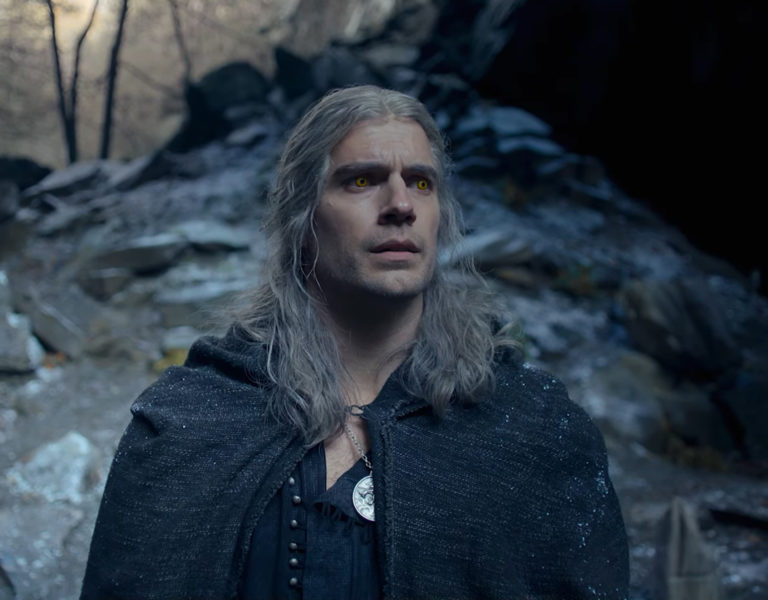WILD CHILD
Queen of genre filmmaking Jennifer Reeder’s new horror about a supernaturally transformed teenager, lensed by Sevdije Kastrati, oozes with feist and feminism.
The ‘troubled teen’, one of the most riffed-on coming-of-age stories, is captured in a bloody new light in Perpetrator, which premiered at this year’s Berlinale. Director Jennifer Reeder’s oeuvre has swayed from experimental film and performance art (most notably White Trash Girl) to narrative features in recent years, and Perpetrator bears her idiosyncratic stamp of sisterhood. Kiah McKirnan stars as the wayward Jonny, who is packed off to stay with her witchy Aunt Hildie (Alicia Silverstone) where she has a supernatural awakening on her 18th birthday.

Kosovar cinematographer Sevdije Kastrati, who splits her time between Europe and LA, instantly connected with Reeder’s evocative, feminist script. “I found it to be a very empowering woman’s story, using what has been traditionally viewed as negative for women and reclaiming them as sources of power and agency,” she remarks.
From her first meeting with Reeder, the DP was on board with the director’s “empowering” vision and remembers, “We didn’t really have to discuss a lot on set because we were just on the same page.” Their initial conversations centred on how to incorporate the film’s themes in the lensing, including mystery, texture, colour, contrast and tenderness.
One of Kastrati’s reference points for creating the latter feeling was Ingmar Bergman’s psychological horror Persona: “It’s a movie in black-and-white, but I found something soft and tender about it, and that’s what I wanted to come through in this movie as well. I wanted it to be contrasty and mysterious, but still soft.”

Reeder and Kastrati decided on a 1.85:1 aspect ratio for Perpetrator for two key framing reasons: firstly, to represent the imposing vertical expanse of Hildie’s Victorian mansion, but also to capture Jonny’s bouffant curls in all their glory. “Her hair is evolving throughout the movie, getting bigger and bigger as we go, so we decided it was important to shoot at this aspect ratio because we didn’t want to lose her hair in the frame”, says the DP.
The film was shot fully on location over 20 days in Chicago in March/April 2022. The Sony Venice, with its dual ISO and high sensitivity, was a clear choice of camera given the amount of night and darker scenes, allowing Kastrati to use smaller lights and a smaller crew to achieve the desired look. Also, the Rialto mode made the camera useful for shooting pokier locations such as Jonny’s school bathroom.
The cinematographer, who hails from a documentary background, loves to operate: “I feel very connected to the characters and their energy feeds into mine, and how the frame is feeling.” She wanted to reflect Reeder’s character-driven story in her camera movement, balancing subtle handheld around Jonny, dana dolly for reveals and push ins, and a couple of carefully choreographed Steadicam scenes (operated by Madelyn Momano, Austin Vinas) such as the party sequence. “We shot [the party] in front and from behind so they could cut back and forth. It was very important for that to feel like one shot and fluid.”

Kastrati remembers wanting to create a completely different look to the Perpetrator’s world at the end of the film. Here, we see a colour shift from the film’s ambers and dark blues to green and cyan to contrast with the pool of blood. While Cooke Panchros are used for most of the film, she managed to source some vintage 14mm and 55mm swing and shift lenses for this final location, allowing her to change the plane of focus. “We wanted these scenes to feel ambiguous, disorienting and uncomfortable, and the scenes with Hildie and her school more grounded in reality,” she notes.
Lighting-wise, Rose Glass’ British horror Saint Maud was an influence, especially for the day interiors in Hildie’s house. Working with gaffer Stephen Wester of Atlas Lighting, Kastrati enjoyed playing with big sources coming through the windows to create a Vermeer-esque falloff. For night scenes between Jonny and Hildie, as the pair started to connect, the cinematographer opted for warmer, softer lights to evoke an increasing feeling of closeness between them.
As Perpetrator featured a diverse cast, Kastrati paid particular attention to capturing skin tones. “We were dealing with a wide range of skin tones, so it was about being really careful with lighting and making sure in the grade we’re staying true to what each woman looked like,” says Kastrati.

The project’s colourist was Picture Shop’s Doug Delaney, who crafted a contrasty LUT with saturated colours that Kastrati, along with the on-set DIT, shaped and adopted for Perpetrator. A lot of his work centred around the film’s bucketloads of blood. “And it wasn’t always the same blood – there were different recipes!” adds Kastrati. Delaney and Kastrati had the painstaking job of ensuring the blood’s colour consistency from scene to scene.
On a similarly sanguinary subject, Kastrati recalls the challenges of shooting the scenes set in a pool of blood. The production team managed to locate a diving training pool and Kastrati had just a couple of hours of setup time before having to plunge into action. “We covered the sides of the pool with black duvetyne. The water was clear and we lit it with red lights – so it looks like blood. The lighting was all done from outside the pool.”
To emphasise the pool’s bloody texture, they had the operator cover the lens with a translucent red material for an extra plate when shooting through the water. “Then in colour grading, we overlaid that plate on top of our hero shots with actors. It wasn’t about just letting our actors be in the pool of blood and everything else go black; we added some more texture with the overlay from the other shot so it reads a little softer – a little surrealist.” Flowing through the film, it’s this surrealist undertone that gives Perpetrator its sinister edge.











